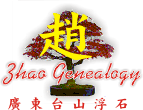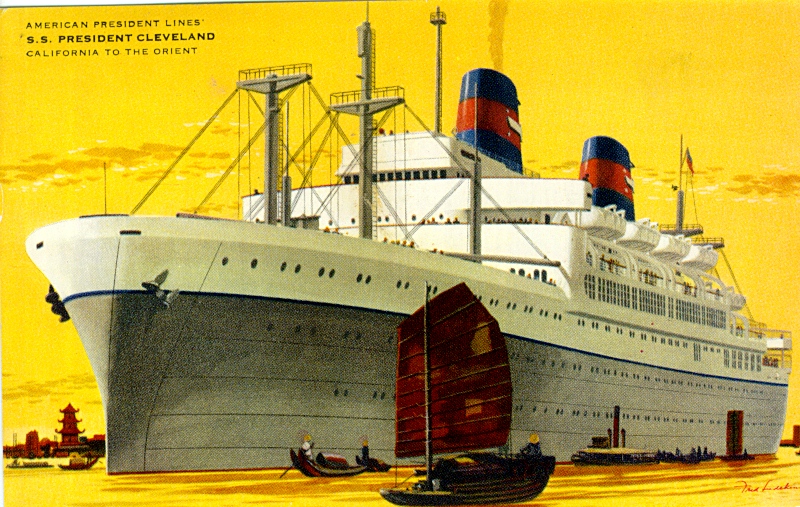

 Mom was born in June 13, 1903 in Fausik (瘚桃╴╴), the second of three siblings and the only girl. It was a reflection of the Chinese tradition more than anything else that she was illiterate yet both of her brothers were educated, especially the older brother who was a teacher. She did learned to recognize her own name and later the street names in Guangzhou and Hong Kong when she was living there. Mom never learned to write her own name yet after arriving in Canada she learned to sign her name in English.
Mom was born in June 13, 1903 in Fausik (瘚桃╴╴), the second of three siblings and the only girl. It was a reflection of the Chinese tradition more than anything else that she was illiterate yet both of her brothers were educated, especially the older brother who was a teacher. She did learned to recognize her own name and later the street names in Guangzhou and Hong Kong when she was living there. Mom never learned to write her own name yet after arriving in Canada she learned to sign her name in English.
Not long after getting married and before my sister, Lin Feng (╴╴喲陶) was born, Dad bought Mom a servant girl for company. Soontoi (╴╴╴敶╴) was five years old at the time. Well, as Mom said "It was a full time job looking after her. Good thing I just wanted her for company." In a way, Mom should be thankful for the practical hands-on experience in child care. It was normal then for people to be married in their mid-teens. An unmarried eighteen-year-old girl was considered an old maid and a real cause for concern. Soontoi stayed with us for about ten years before she was married so none of us children got to know her really well.
At regular intervals Dad, in Canada, would sent money home. This was the family's only source of income. After the States declared war on Japan, the fighting on the Pacific closed the shipping lanes, and the family suffered terribly. However, there were many families in this similar situation. Many sold or pawned their valuables such as clothing and furnishing while others hired themselves out as helpers during harvest and coolies the rest of the time. Mom chose the latter route and with help from her younger brother, Sui Wen Zhao (頞╴╴╴╴╴╴╴), the family managed to cope. With this suffering fresh in mind, it was not a surprise when upon Dad's return after WWII that they went and bought some farm land.
Don't have much recollection of the rice fields because they were surrounded by fields of others. But I still have memories of the plot by the hill because the crops grew there were different. It wasn't (still is?) suitable for rice, lack of water. So Mom planted peanuts and yams. A treat was roasted freshly harvested yam wrapped in tin foil on a cold winter day.
After giving birth to two daughters, at the rather advanced age of 46, Mom gave birth to a baby boy, Kevin. It was a difficult birth. It was only through the heroic effort of Lai Siu Sang, a nurse, that this joyous occasion remained so. In appreciation, they got their son to treat her as an adopted mother.
The move to Guangzhou and later to Hong Kong must have been very difficult for Mom. First she would have to learn or at least understand a new dialect, which, though somewhat similar to the one she spoke had enough differences to make understanding a problem. And for the first time in her life she had to learn to recognize street names. However, this was child-play when compared to the adjustments she later would have to undergo in Canada.
Somehow Mom got the notion, or somebody had told her that there are no coconuts in Canada. So while in Hong Kong waiting for our visa to Canada, Mom would make coconut congee, a rather sweet concoction, a lot. At the time, it seemed like daily. In actual fact, I'm sure it was only every other day. She would have it ready as an after-school snack. Really a treat to look forward to.
 On November 20, 1957, we set sail for San Francisco aboard the President Cleverland. Mom became sea-sick almost as soon as we set foot on the ship. She hardly ate during the whole trip. It was a wonder that she survived the 18-day trans-Pacific journey. From San Francisco we took the overnight train to Vancouver. The two days stop-over in Vancouver rejuvenated her.
On November 20, 1957, we set sail for San Francisco aboard the President Cleverland. Mom became sea-sick almost as soon as we set foot on the ship. She hardly ate during the whole trip. It was a wonder that she survived the 18-day trans-Pacific journey. From San Francisco we took the overnight train to Vancouver. The two days stop-over in Vancouver rejuvenated her.
We boarded the Trans-continental which departed from downtown Vancouver's CP Station. For four days, our eastward journey to Montr撊吸 took us over the Rockies, crossed the snow-covered Prairies and hilly central Canada. Prior to departure, we purchased some Chinese barbecue goods for the trip. Again Mom suffered from motion sickness, but compared to the ocean crossing this was nothing.
In the spring of 1958, she went to work at Wong Wing Food to earn some money to send back to my sister, Lin Feng, who was still in China. Because of the Great Leap Forward, China at the time was in the midst of a famine. Mom got Dad to bring home chicken feet which the restaurant would discard anyway. She would dry them and shipped it back to China. For a time, inside the house there were chicken feet hanging from everything and everywhere.
Packaging and shipping the dried chicken feet was something to remember. Either Canada Post or China had a weight limit on parcels going to China. I remember we were trying to get as close to twenty pounds as possible but had to remained under the limit. It was quite a challenge using a hand scale. One of us would lift it up and another would get on all fours to read the weight. Wording the declaration was extremely important. A wrong word could result in the parcel being discarded or confiscated by the Chinese authorities.